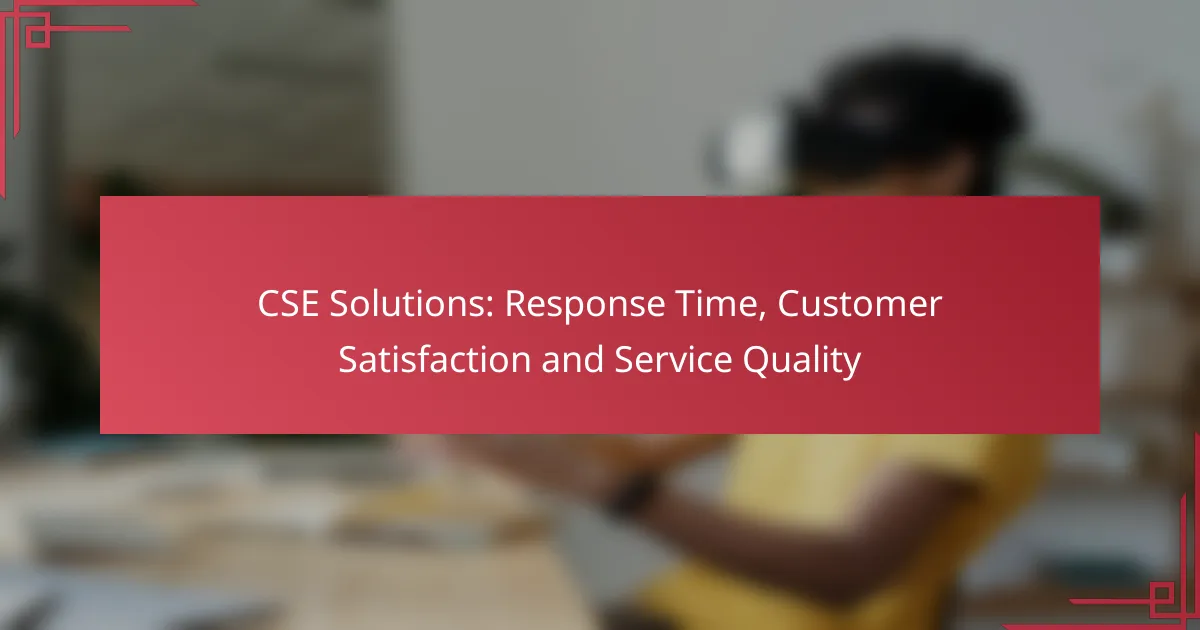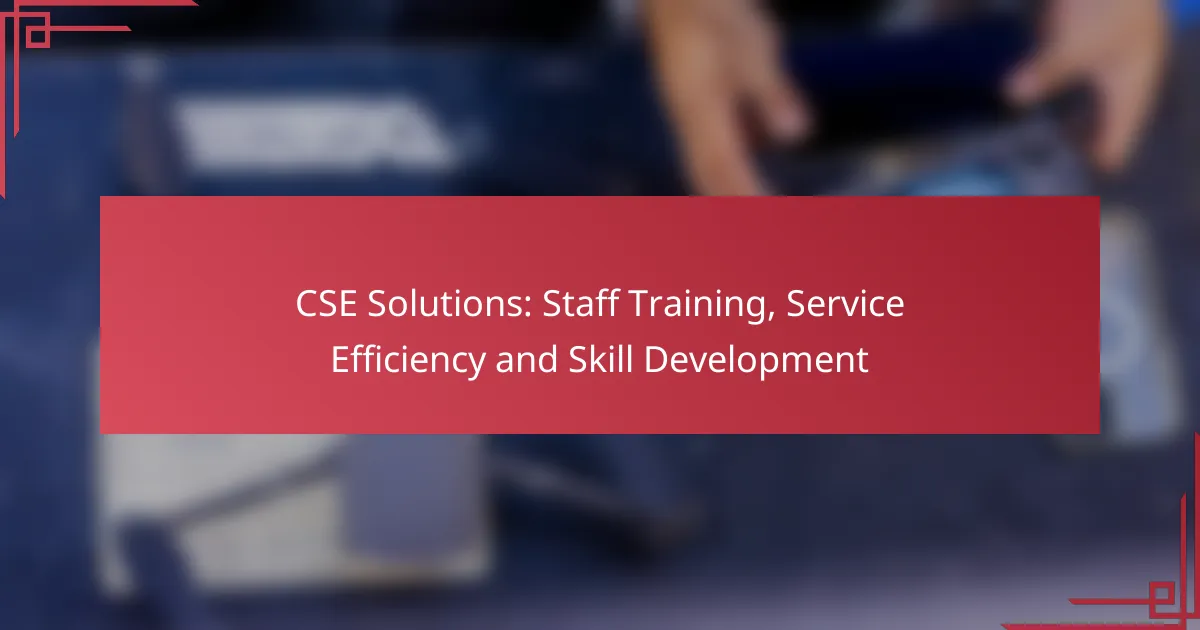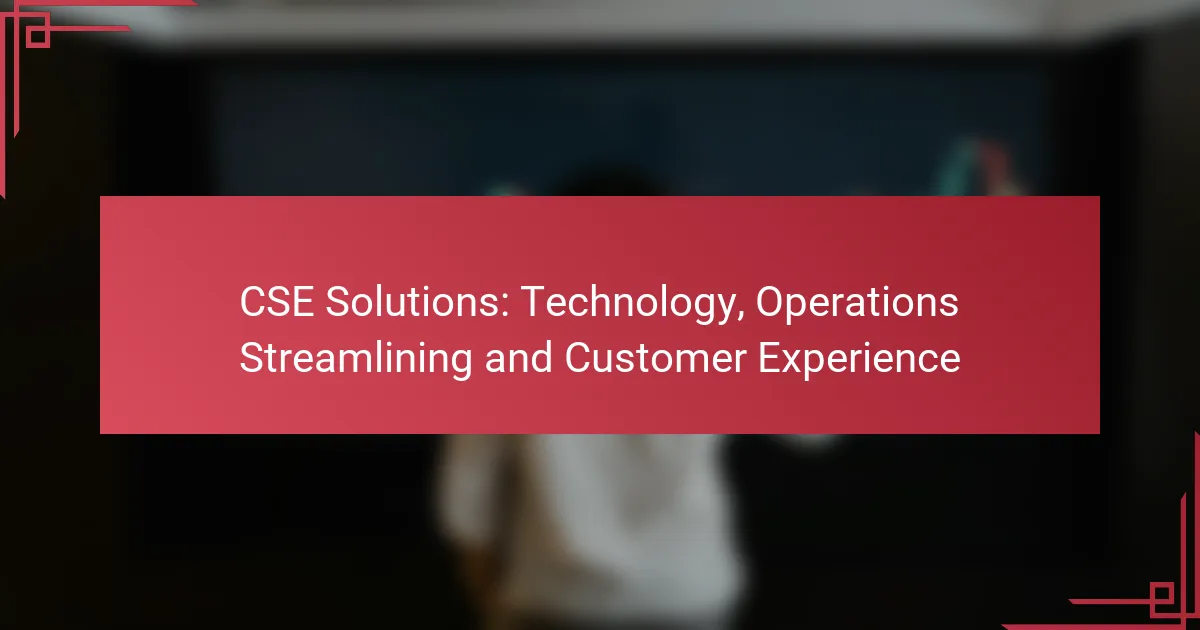In the realm of Customer Service Excellence (CSE), response time plays a crucial role in shaping customer satisfaction and overall service quality. By adhering to established benchmarks for promptness and efficiency, organizations can enhance the customer experience significantly. Faster response times not only make customers feel valued but also contribute to higher satisfaction levels, ultimately reflecting in key performance metrics such as Customer Satisfaction Score (CSAT) and Net Promoter Score (NPS).

What are the best practices for CSE response time in the UK?
Best practices for customer service engagement (CSE) response time in the UK focus on promptness and efficiency. Aiming for response times within established benchmarks can significantly enhance customer satisfaction and service quality.
Real-time monitoring tools
Utilizing real-time monitoring tools is essential for tracking response times effectively. These tools allow businesses to assess their performance instantly and make necessary adjustments to improve service delivery. Popular options include customer relationship management (CRM) systems and dedicated analytics platforms.
Implementing dashboards that display key metrics can help teams stay informed about their response times and identify trends. Regularly reviewing this data enables proactive management of customer inquiries and enhances overall service quality.
Standard response time benchmarks
In the UK, standard response time benchmarks vary by industry but generally recommend responding to customer inquiries within a few hours to a day. For instance, many businesses aim for initial responses within one hour for live chat and within 24 hours for email inquiries.
Meeting or exceeding these benchmarks can lead to higher customer satisfaction rates. Regularly evaluating these standards against industry norms can help businesses remain competitive and responsive to customer needs.
Automation in customer service
Automation plays a crucial role in improving response times in customer service. By implementing chatbots and automated email responses, businesses can handle routine inquiries swiftly, allowing human agents to focus on more complex issues.
While automation can enhance efficiency, it is important to strike a balance. Over-reliance on automated systems may frustrate customers who prefer human interaction for certain queries. Therefore, providing an easy transition to human agents when needed is essential for maintaining service quality.

How does response time affect customer satisfaction?
Response time significantly influences customer satisfaction by directly impacting how quickly customers feel acknowledged and valued. Faster responses generally lead to higher satisfaction levels, as customers appreciate timely assistance and resolution of their issues.
Correlation between speed and satisfaction
The relationship between response speed and customer satisfaction is well-documented. Customers expect quick replies, often within minutes for online inquiries or calls. A delay of even a few minutes can lead to frustration, while responses within low tens of seconds can enhance the overall experience.
To maintain high satisfaction, businesses should aim for response times that meet or exceed industry benchmarks. For instance, a common standard for customer service response time is under five minutes for live chat and under one hour for email inquiries.
Impact on customer loyalty
Quick response times not only boost satisfaction but also foster customer loyalty. When customers receive prompt assistance, they are more likely to return for future purchases and recommend the service to others. This loyalty can translate into repeat business and positive word-of-mouth, which are invaluable for growth.
Conversely, slow response times can lead to dissatisfaction and churn. Companies should monitor their response metrics closely and implement strategies to improve efficiency, such as training staff or utilizing automated systems to handle common queries.
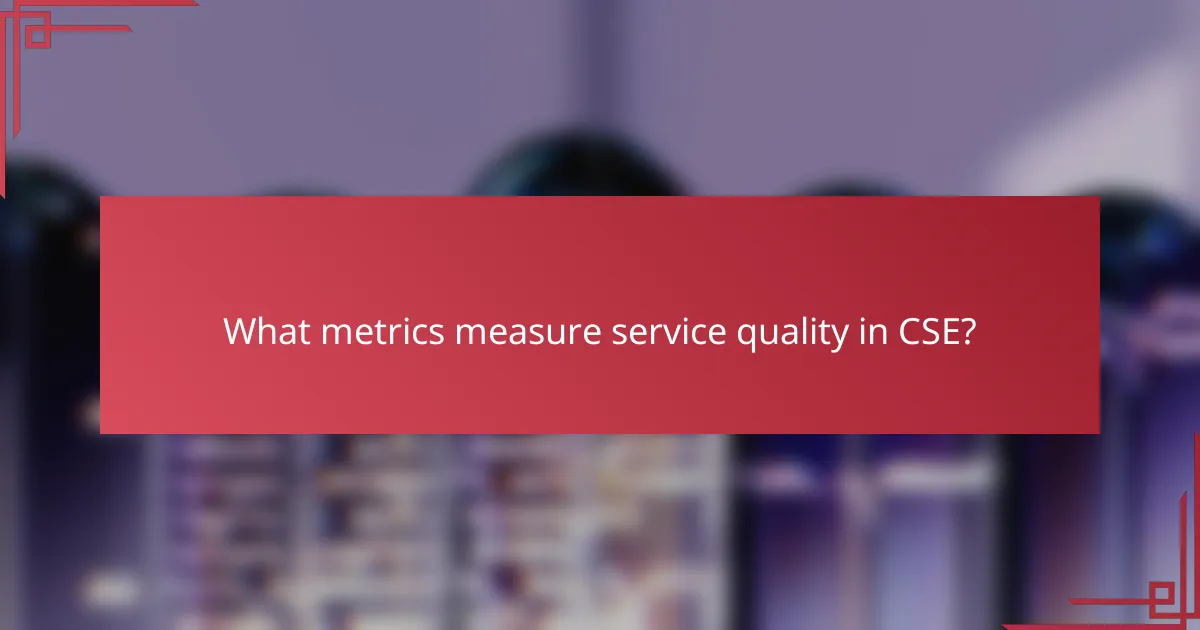
What metrics measure service quality in CSE?
Service quality in Customer Service Excellence (CSE) is primarily measured through metrics that reflect customer experiences and operational efficiency. Key metrics include Customer Satisfaction Score (CSAT), Net Promoter Score (NPS), and First Contact Resolution Rate, each providing insights into different aspects of service performance.
Customer satisfaction score (CSAT)
The Customer Satisfaction Score (CSAT) gauges how satisfied customers are with a service or interaction. Typically measured through surveys immediately after a service encounter, CSAT is expressed as a percentage of satisfied customers compared to the total number of respondents.
To calculate CSAT, ask customers to rate their satisfaction on a scale, often from 1 to 5 or 1 to 10. A common benchmark is aiming for a CSAT score above 80%, indicating a high level of customer satisfaction. Regularly monitoring this metric helps identify trends and areas for improvement.
Net promoter score (NPS)
The Net Promoter Score (NPS) assesses customer loyalty by asking how likely customers are to recommend a service to others. Responses are categorized into promoters, passives, and detractors, allowing businesses to calculate a score that ranges from -100 to +100.
A strong NPS, typically above 50, indicates a healthy customer base willing to advocate for the brand. Regularly tracking NPS can reveal shifts in customer sentiment and highlight the effectiveness of service improvements or changes.
First contact resolution rate
The First Contact Resolution Rate measures the percentage of customer inquiries or issues resolved during the first interaction. This metric is crucial as it directly impacts customer satisfaction and operational efficiency.
To improve this rate, ensure that customer service representatives are well-trained and equipped with the necessary tools and information. Aiming for a First Contact Resolution Rate of 70% or higher is often considered a good target, as it indicates effective service delivery and reduces the need for follow-up interactions.
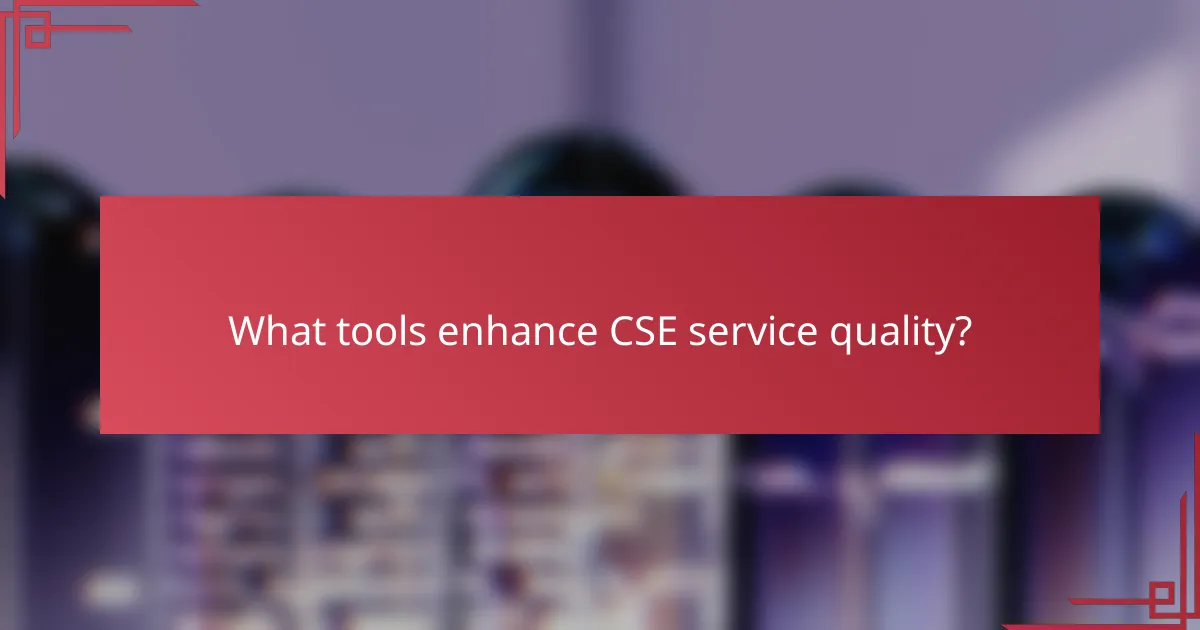
What tools enhance CSE service quality?
Tools that enhance Customer Service Excellence (CSE) service quality focus on improving response times, customer satisfaction, and overall service efficiency. Effective platforms streamline communication, manage tickets, and provide analytics to help teams deliver better support.
Zendesk for customer support
Zendesk is a widely used customer support platform that centralizes communication across multiple channels, including email, chat, and social media. It enables teams to respond quickly to customer inquiries, often within a few minutes, which significantly boosts customer satisfaction.
Key features include customizable ticketing systems, automated responses, and detailed reporting tools. These functionalities help businesses identify trends in customer queries and adjust their strategies accordingly, ensuring a higher quality of service.
Freshdesk for ticket management
Freshdesk specializes in ticket management, allowing support teams to efficiently track and resolve customer issues. Its intuitive interface makes it easy for agents to prioritize tickets based on urgency, which can lead to faster resolution times.
With features like automation, team collaboration tools, and performance analytics, Freshdesk helps organizations maintain high service quality. Companies can also benefit from its integration capabilities with other tools, enhancing overall workflow and customer experience.
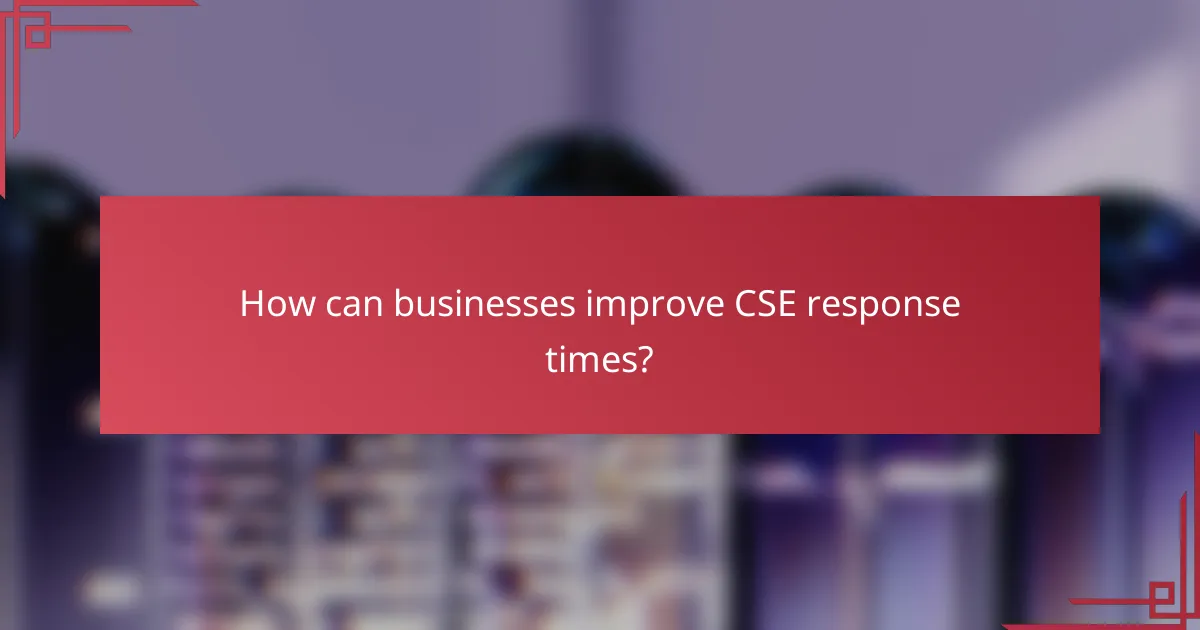
How can businesses improve CSE response times?
Businesses can enhance customer service experience (CSE) response times by streamlining processes and leveraging technology. Key strategies include training staff effectively and implementing automated solutions like chatbots to handle routine inquiries.
Training staff for efficiency
Efficiently trained staff can significantly reduce response times by quickly addressing customer inquiries. Regular training sessions focused on product knowledge, communication skills, and problem-solving techniques empower employees to resolve issues faster.
Consider implementing role-playing exercises and scenario-based training to simulate real customer interactions. This hands-on approach helps staff practice responses and improve their confidence, leading to quicker resolutions.
Implementing chatbots
Chatbots can dramatically improve response times by providing instant answers to common questions, allowing human agents to focus on more complex issues. These automated tools can handle multiple inquiries simultaneously, reducing wait times for customers.
When deploying chatbots, ensure they are programmed with a comprehensive knowledge base and can escalate issues to human agents when necessary. Regularly updating the chatbot’s information and capabilities is crucial to maintaining its effectiveness and customer satisfaction.
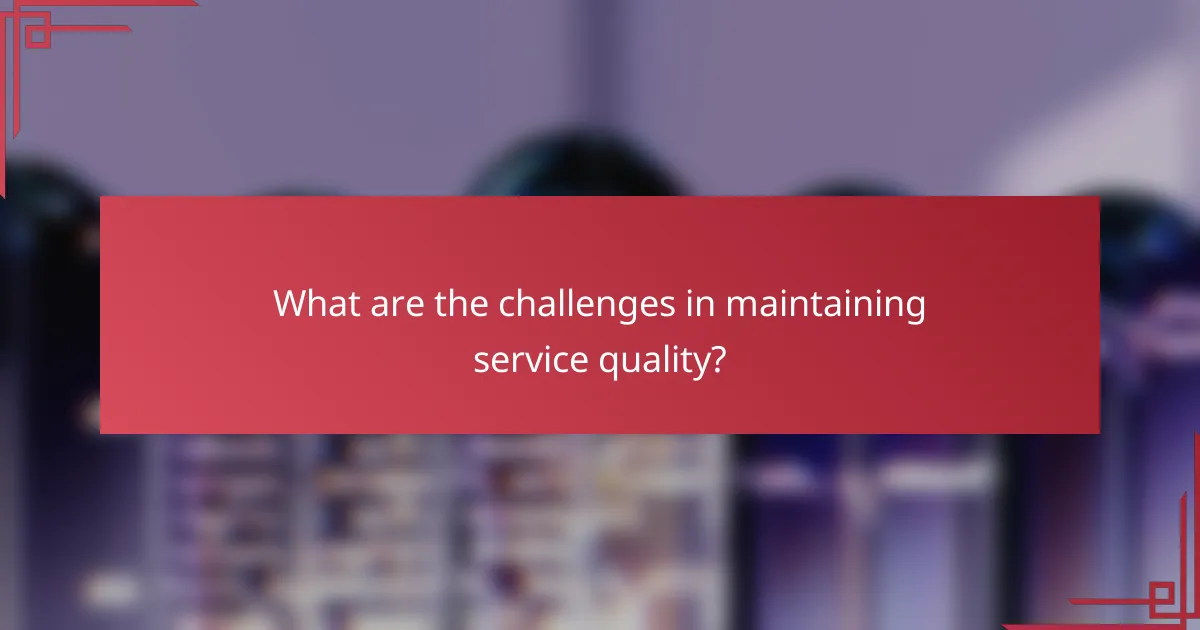
What are the challenges in maintaining service quality?
Maintaining service quality presents several challenges that can impact response time and customer satisfaction. Key issues include managing high volumes of customer inquiries and dealing with staff turnover, which can lead to increased training costs and inconsistent service delivery.
High volume of customer inquiries
A high volume of customer inquiries can overwhelm support teams, leading to longer response times and decreased satisfaction. Organizations often face spikes in inquiries during peak seasons or following product launches, making it crucial to have scalable solutions in place.
To manage this challenge, companies can implement automated systems, such as chatbots, to handle basic inquiries. This allows human agents to focus on more complex issues, improving overall efficiency and service quality.
Staff turnover and training costs
High staff turnover can disrupt service quality, as new employees require time to become proficient. Frequent changes in personnel can lead to inconsistent customer experiences, which may negatively affect satisfaction ratings.
Investing in employee retention strategies, such as competitive salaries and professional development opportunities, can help reduce turnover. Additionally, creating a structured training program can expedite the onboarding process, ensuring that new hires are equipped to deliver quality service quickly.
